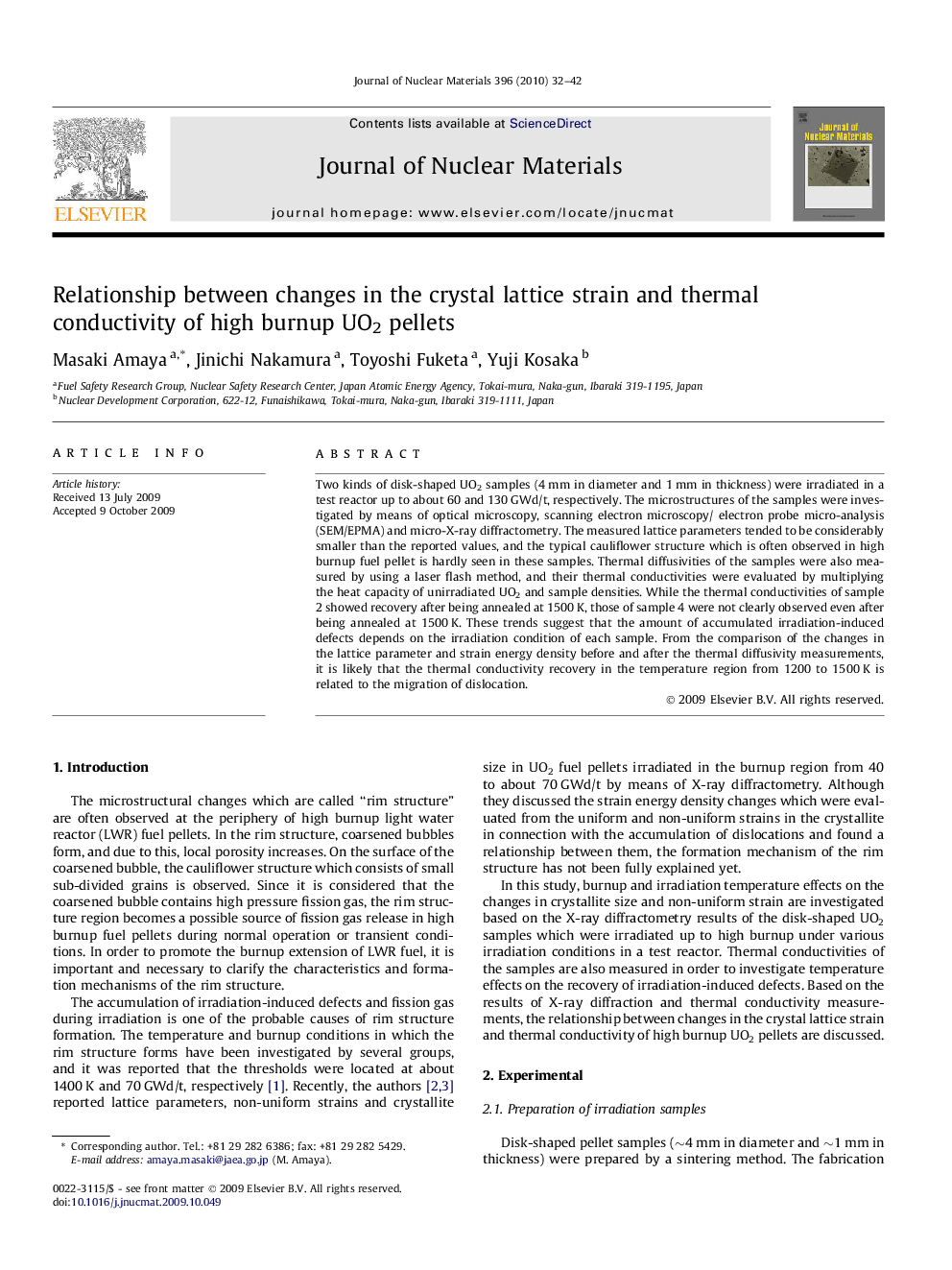| Article ID | Journal | Published Year | Pages | File Type |
|---|---|---|---|---|
| 1567433 | Journal of Nuclear Materials | 2010 | 11 Pages |
Abstract
Two kinds of disk-shaped UO2 samples (4Â mm in diameter and 1Â mm in thickness) were irradiated in a test reactor up to about 60 and 130Â GWd/t, respectively. The microstructures of the samples were investigated by means of optical microscopy, scanning electron microscopy/ electron probe micro-analysis (SEM/EPMA) and micro-X-ray diffractometry. The measured lattice parameters tended to be considerably smaller than the reported values, and the typical cauliflower structure which is often observed in high burnup fuel pellet is hardly seen in these samples. Thermal diffusivities of the samples were also measured by using a laser flash method, and their thermal conductivities were evaluated by multiplying the heat capacity of unirradiated UO2 and sample densities. While the thermal conductivities of sample 2 showed recovery after being annealed at 1500Â K, those of sample 4 were not clearly observed even after being annealed at 1500Â K. These trends suggest that the amount of accumulated irradiation-induced defects depends on the irradiation condition of each sample. From the comparison of the changes in the lattice parameter and strain energy density before and after the thermal diffusivity measurements, it is likely that the thermal conductivity recovery in the temperature region from 1200 to 1500Â K is related to the migration of dislocation.
Related Topics
Physical Sciences and Engineering
Energy
Nuclear Energy and Engineering
Authors
Masaki Amaya, Jinichi Nakamura, Toyoshi Fuketa, Yuji Kosaka,
